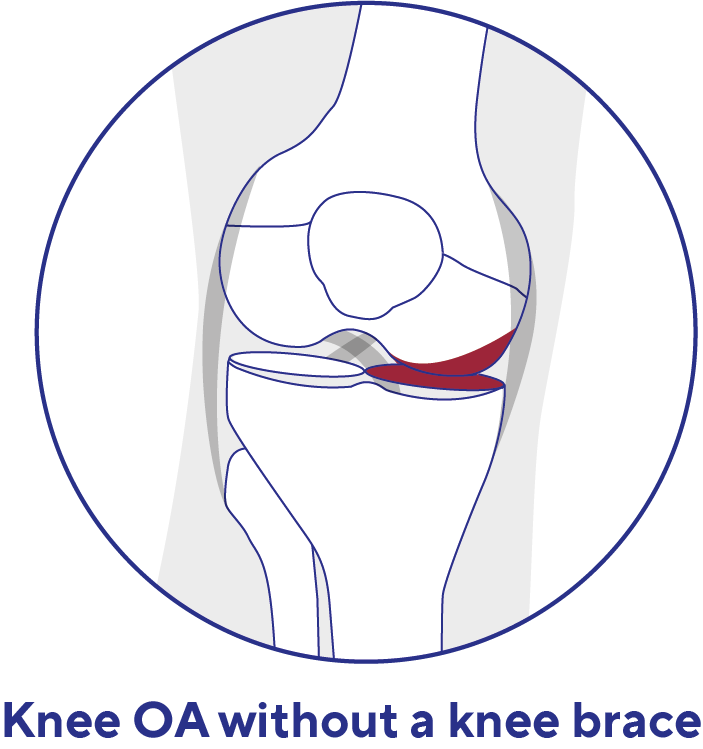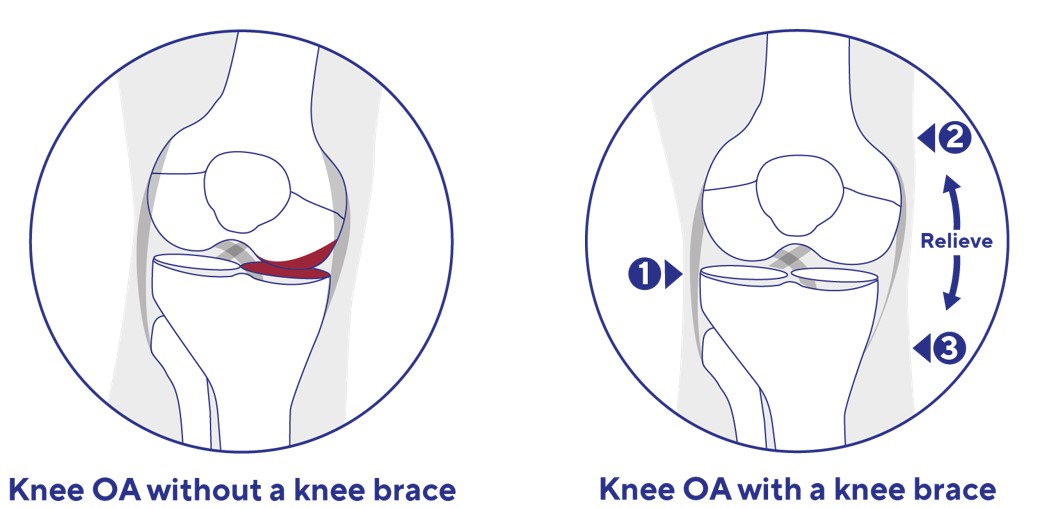Offloading knee braces: A solution to relieve osteoarthritis

Knee osteoarthritis is a common condition that can significantly impact patients' quality of life. Among the available solutions to alleviate pain and improve mobility, unloading knee braces play an important role. But how do they work? Who are they designed for?
To answer these questions, we spoke with Baptiste, an orthotist-prosthetist in Belgium. With ten years of experience in designing and manufacturing orthoses and prostheses, he sheds light on the benefits and effectiveness of these medical devices.
Discover his expertise in this interview.
Question:
Can you explain what your role as a prosthetist-orthotist entails?
Baptiste:
My work is very comprehensive and mainly involves fitting individuals with reduced mobility, whether due to severe or milder disabilities. This includes devices like orthopaedic insoles, as well as custom-made prostheses and orthoses.
Question:
What is your role in managing knee osteoarthritis?
Baptiste:
My primary role is to relieve the patient by offloading the knee. If a surgical intervention is planned, the objective is to preserve the joint so that the operation can be performed under optimal conditions. After surgery, the knee brace plays a crucial role in limiting stress on the knee during the recovery period, as we know that even though surgery is beneficial, it is still a trauma to the patient’s body and requires time to adapt.
Question:
What are the main treatment options you offer your patients?
Baptiste:
We do not directly provide treatments because we work in collaboration with orthopaedic surgeons and physiotherapists. If a patient comes in with pain, we refer them to a specialist. However, we can introduce them to offloading knee braces, which are tailored to their specific condition, especially in cases of medial or lateral knee osteoarthritis (i.e., affecting the inner or outer compartments of the knee, also known respectively as medial and lateral).
Question:
What role do the knee braces play in the treatment of knee osteoarthritis?
Baptiste:
They serve an offloading function [the offloading brace redistributes weight on the joint by applying gentle pressure to open the space on the painful side, thereby reducing friction and pain]. The goal is to relieve the portion of the joint affected by osteoarthritis, whether it’s on the lateral or medial side of the knee.

Question:
Should all patients with knee osteoarthritis wear a knee brace?
Baptiste:
Not necessarily on a full-time basis. During flare-ups, the knee brace can provide relief and help prevent unnecessary pain. However, rehabilitation and adjustments in movement patterns to offload the affected part of the joint might be more sustainable solutions. If the pain persists, a surgical intervention combined with orthopaedic bracing may be considered.
Question:
How do you choose the type of knee brace that is best suited for a patient?
Baptiste:
The choice depends on several factors: the patient’s activity level, body morphology, and the severity of their injury. Some knee braces are thinner and easier to put on, which may be suitable for an elderly person, while others are more robust and better suited for very active patients who require enhanced support.
Question:
What other devices or techniques do you use to relieve pain?
Baptiste:
When knee osteoarthritis is accompanied by postural or gait issues, orthopaedic insoles can provide relief. However, they only help reduce the pain and don't always completely eliminate it.
Question:
How is the follow-up process managed after prescribing a knee brace?
Baptiste:
We discuss the patient’s activity level, body morphology, and expectations. If a prefabricated knee brace is suitable, we test several models together to find the best match. If a custom-made knee brace is necessary, we take a mold, then proceed with manufacturing, a fitting session, and adjustments before delivering the device.
Question:
At what stage of osteoarthritis do you recommend using a knee brace?
Baptiste:
As soon as it starts affecting the patient’s daily life. Every case is unique: some people are very bothered even at an early stage, while others cope well with osteoarthritis even in advanced stages.
Question:
Do education and physical activity play a role in managing osteoarthritis?
Baptiste:
Yes, of course! Good muscle tone [permanent and involuntary muscle contraction level] stabilises the knee. Insufficient or imbalanced musculature can lead to harmful compensations on one side of the knee. Rehabilitation and physical exercise are therefore essential to rebalance the load on the joint.
Question:
How does orthopaedic management improve patients' quality of life?
Baptiste:
It helps reduce pain, which is crucial for everyday well-being. Living with constant pain is unbearable, and our work aims to alleviate as much of that discomfort as possible.
Question:
What are the biggest challenges in treating osteoarthritis?
Baptiste:
One of the main challenges is finding a knee brace that is both effective and comfortable to wear. Many patients think it’s as simple as slipping on something light—like a sock—and that it will be enough to improve their condition. Unfortunately, it’s not that simple. The real challenge lies in finding the right model or designing a knee brace that, while effective, doesn’t cause too much discomfort. The goal is to develop a device that offloads the knee as intended while minimizing inconvenience for the patient – a challenge we frequently face.
Question:
What do you say to patients who fear becoming dependent on their knee brace?
Baptiste:
Dependence often indicates that the pain is too severe. Ideally, the brace should be used on an as-needed basis, particularly during flare-ups, while strengthening exercises for the knee help reduce the need for constant use.
If you suffer from knee osteoarthritis, consulting a healthcare professional is essential to find the most suitable solution for your situation. Personalised care can help relieve pain and improve your daily mobility. Don’t let discomfort limit your activities—solutions are available to support you in achieving a better quality of life.